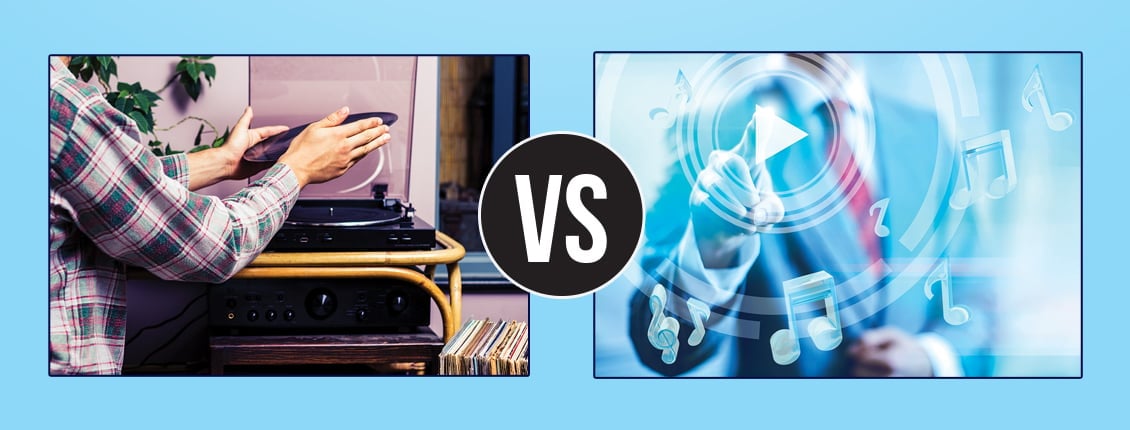
Four decades ago, no one could have predicted that vinyl LPs would fade from cultural and commercial relevance only to bounce back in the face of a trend that might have rendered them truly obsolete. As of 2017, record stores dot the hip districts of every major city, their customers fully attuned to the listening pleasures of a pre-digital world.
Audio cassettes are also on the upswing, with Forbes reporting 74% sales growth in 2016.
A closer comparison between traditional and digital media reveals pros and cons on both sides.
Buying Experience
Brick-and-mortar record stores have the advantage of comfort and familiarity. The very act of visiting one of these establishments forms a key part of the LP enthusiast’s experience. Flipping through records on the shelves or in crates may be somewhat tiring, but it’s also rewarding. The customer leaves the store feeling as though some literal treasure has been unearthed.
Buying music digitally is, of course, a great deal more impersonal—streaming even more so. But here the convenience of the Internet comes into play. Amazon sells albums and individual songs with a shopping experience as simple as a single click. Then there are the popular streaming sources like Pandora, Spotify and even YouTube, which have adapted themselves to the age of the app.
Sound Quality
This is a classic concern, bringing back memories of the debates that raged over the fidelity of LPs vs. CDs as the latter rose to prominence in the late ‘80s and early ‘90s. Today, perhaps more than ever, audiophiles prefer vinyl. They tout its warmer sound, which is said to capture a wider dynamic range.
By the same logic, digital media has long been criticized for its compression, which results in a loss of musical detail. But records also require upkeep in a way that digital files are not. And in the absence of this attention, they may become prone to wear and tear. There will always be listeners who prefer to minimize the possibilities of crackles, pops and hisses by relying exclusively on digital and streaming sources.
Accessory Options
Both traditional and digital listening formats carry significant potential for the sale of related items.
First comes the most important accessory of all: the record player! Companies like Audio Technica and Jensen make classic 2- and 3-speed (for 33 1/3, 45 and 78 RPM records) stereo turntables. Others choices, like the Bluetooth Vintage Style Turntable from Pyle Home, blend a timeless aesthetic with 21st century technology.
Next come audiophile-grade headphones from manufacturers like Sennheiser and Koss make great choices for vinyl play. For example, the Noise reducing headphones are designed to prevent ambient noise from interfering with listening.
And remember the importance of keeping records clean? A product like a Record Cleaning Kit represents a good upsell opportunity because it meets a basic need. It comes with a cleaning brush and solution for the removal of dust, dirt and fingerprints. There are also brands like Discwasher that have accumulated decades of experience in providing reliable physical media cleaners.
Meanwhile, when it comes to the enjoyment of digital music, every smartphone deserves a reliable set of earbuds, some of which retail under $10. And don’t forget the wireless speakers!
The Takeaway
Considering these factors—not to mention a 25-year high for vinyl record sales in 2016—analog music might just be music to your ears as a retailer!
